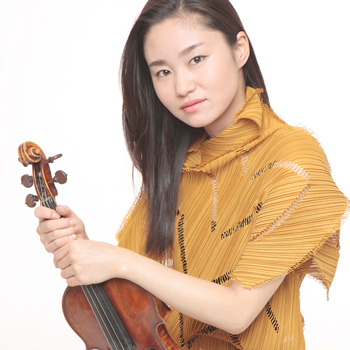by Robert Rollin

In his review of its premiere in 1881 by Adolf Brodsky, Eduard Hanslick wrote, “It brought us face to face with the revolting thought that music can exist that stinks to the ear … The violin was not played, but beaten black and blue.” Critics misunderstood the work’s rhapsodic intensity, driven by the composer’s ill-chosen marriage and almost immediate divorce. Players and audiences alike now adore it.
Shoji and CityMusic generated a near perfect reading. Performances like these are rare.
I distinctly recall my mother taking me as a young teenager to hear Van Cliburn in a wonderful performance of Rachmaninoff’s Third Piano Concerto in New York. Shoji delivered a similar level of performance with her passion, impeccable technique, great expression, and exquisite dynamic control. Her gorgeous tone, never blatant, always came through. Balance was spot-on, and she tossed off incredibly difficult passages with ease.
Coordination among Shoji, Dorman, and the orchestra was both flexible and controlled. The long first-movement cadenza was flawless, all virtuosic complexities subordinate to Shoji’s clarity of melodic line. Clarinetist Daniel Gilbert excelled on the obbligato arpeggios supporting her solo lines.
In the Canzonetta, Gilbert gracefully echoed Shoji’s beautiful, unadorned melody, leading to a charming, more elaborate duet — the movement’s finest moment.
The Finale’s scherzo-like first theme, ripe with high violin harmonics, absolutely sparkled. The contrasting second theme, more impassioned and intense, provided rhapsodic, emotional moments. Beautiful solos in flute, oboe, and bassoon added wonderful color, adding to the unforgettable reading.
Beethoven’s Symphony No. 4 filled the second half of the concert. Written on commission between the more romantically impassioned “Eroica” and the Fifth Symphony, the Fourth scintillates with classical grace and charm. Dorman brought out the introductory Adagio’s brooding mood, creating great contrast with the fortissimo chords that begin the Allegro vivace, and adding further interest to the composer’s cleverly exuberant syncopation and jocular phrasing.
The inventive second movement featured fine solos in clarinet, French horn, and flute.
The woodwinds shone in the Rondo. Bassoonist Alexander Davis dashed through his challenging and boisterous solo with poise and élan, and the oboe and flute solos scintillated. Dorman and CityMusic crafted a meticulous and exceptional performance.
Dorman began the concert with his own composition, After Brahms — Three Intermezzi for Orchestra. The First Intermezzo employs Brahms’s Intermezzo, Op. 118, No. 1, as the inspiration for its arpeggio figures. Explosive textural elements take over as the movement progresses.
The descending arpeggios in Brahms’s Op. 119, No. 1, provided the departure point for Dorman’s Second Intermezzo, though he increases each of Brahms’s patterns by one eighth-note. The lighter middle section evokes the idea of a modern pop song. The return adds more syncopation and brighter orchestral colors, and closes with a quiet, low-register tuba solo.
The Third Intermezzo draws on Brahms’s general style rather than on a particular piece. The constant descending line, suspended lyrical inner voice, and cross rhythms all evoke Brahms’s own Intermezzi. 21st-century techniques appear as the piece progresses, but Brahms’s introspective mood prevails.
Published on ClevelandClassical.com October 23, 2016.
Click here for a printable copy of this article

